Motorcycle Trike Back End of It Built Like a Dragon

From the Dark World of Nonconformity They Emerged…On Car Tires.
Have you ever found yourself unwittingly in the middle of a heated religious or political debate between two vehemently opposed participants? Not since the dispute over conventional oil vs. synthetic oil have I seen such polarized and passionate opinions in the motorcycle world. The question is, unlike the face off over the slippery stuff, could this practice by those known as "Dark Siders" actually be a dangerous one?
Advertisement
"I'm interested in signing up for one of your Stayin' Safe training tours," the email began. "But before I register, I want to make sure it's OK to participate if I have a car tire mounted on my Gold Wing." A what? Did he say a "car tire?" I have to admit I had never heard of such a thing. Nor could I fathom why anyone would want to do it. As difficult as it is for me to turn any rider away who is interested in improving his or her skills, my response was, "I'm afraid we have to say no." I was concerned about the potential risk for this rider and others on the tour—especially knowing our tour would include some tight and technical mountain back roads with switchbacks. My decision to turn this rider away (along with a handful of his riding buddies) was based on my belief that riding with a car tire on a motorcycle could not possibly be a good idea or a safe practice. But I had to admit—and I did to this gentleman—my knowledge of the practice was extremely limited. I would need to learn more. As it turns out, that would require a trip to the Dark Side.
Behold, the Dark Side: A growing sect of riders that promotes the use of car tires on motorcycles
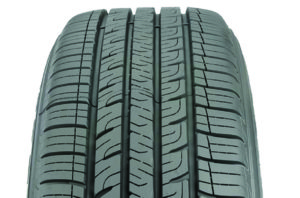
Dark Siders (they call themselves that) are part of one of the most evangelical groups of motorcyclists I've encountered. They are deeply passionate about their practice of using car tires in place of prescribed motorcycle tires on their bikes. And they are more than anxious to profess those beliefs in the hope others might also see the light. Or the dark, as it were. It borders on a religious movement. Needless to say, it was not difficult to get their side of the story. In fact, after I broke the news to the prospective student, I was soon flooded with emails from other Dark Siders, each enthusiastically sharing his personal testimony, telling of his conversion to a life of riding on the dark side, never to return to conventional practices again. "Remember, the earth was once flat too," one Dark Sider offered.
Another went further to explain the extent of their mission, "Being that we are free thinkers, we push the envelope all the time trying new, different, bigger, winter, summer, truck tires on our various scoots." These riders believe, rightly or wrongly, that car tires provide more economy and are less likely to fail than motorcycle tires. Some even believe them to be safer. Others were quick to accuse tire companies, claiming they know how to make motorcycle tires that last longer and cost less but, instead, scheme to make as much money on riders as they can.
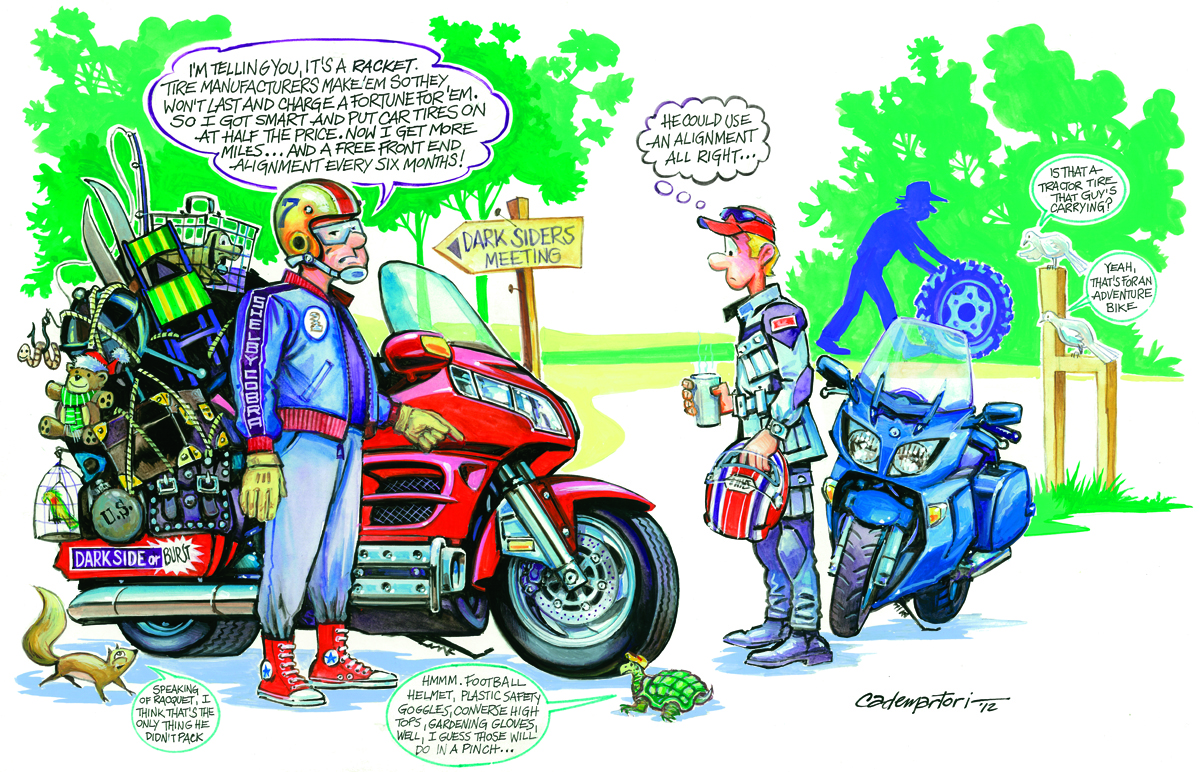
Personally, I view motorcycle tires as high-performance tires and expect that to come at a price. When compared to their high-performance brethren from the automotive world, I have found motorcycle tires to be on par when it comes to performance, cost and wear characteristics.
Although it has spread to other makes and models, this movement appears to have originated among a number of luxury-touring motorcycle riders who claim to have experienced repeated motorcycle tire failures on these behemoth machines. Issues reportedly extended from very rapid tire wear to poor handling to blowouts and tire delamination (potential causes and preventive measures for these issues can be found in the accompanying story). So, some riders turned to car tires as a fix. And, once they found a shop willing to mount the car rubber on a bike rim, they began to accumulate miles without serious consequences (although most admit to the bike handling "differently"). The practice of mounting car tires to the rear of motorcycles began to expand and the order of Dark Siders grew as other riders were attracted by economics. Car tires, at least the ones they were choosing to fit to their bikes, tend to be less expensive and reportedly provide longer tread life. Predictably, some riders even began to mount car tires on the front rim, as well, and others have followed.
Dark Siders claim to have collectively ridden millions of miles on car tires without a reported crash resulting specifically from car tire failure (although there is no clear way of knowing if tire handling issues have played a contributing role in any crashes). One Dark Sider proudly claims that on one forum alone there are more than 1,000 touring bike owners who swear by them. Realistically, there have also been millions of incident-free miles covered by helmetless or poorly dressed riders, but I'm not ready to leave my gear at home simply because others have been able to do so without landing in the hospital or morgue.
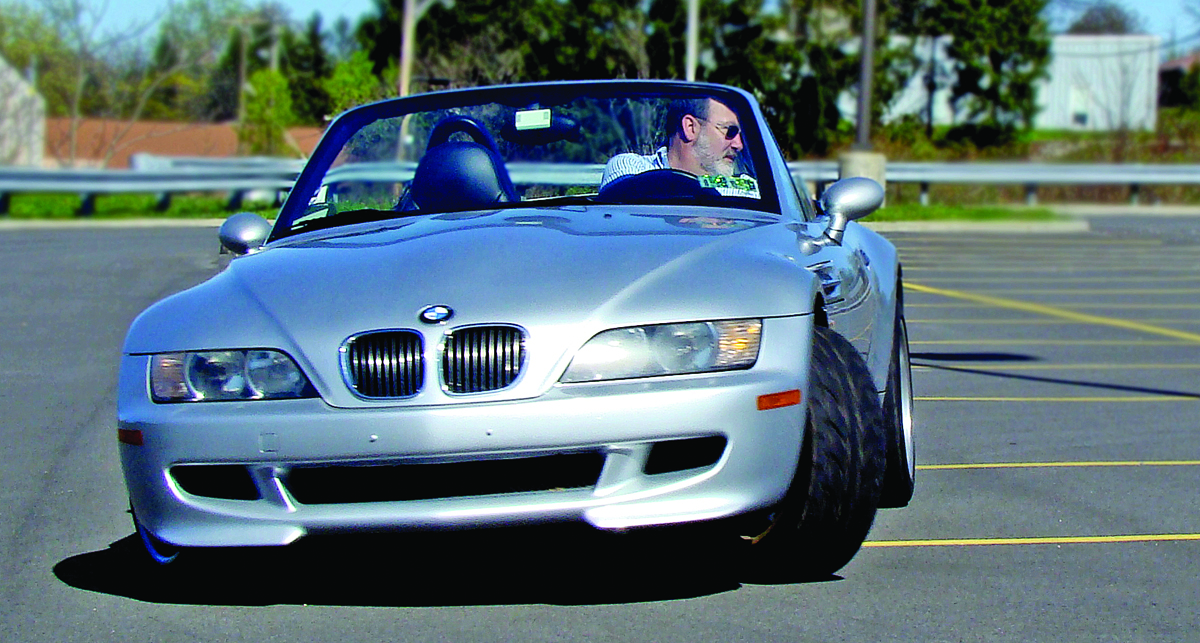
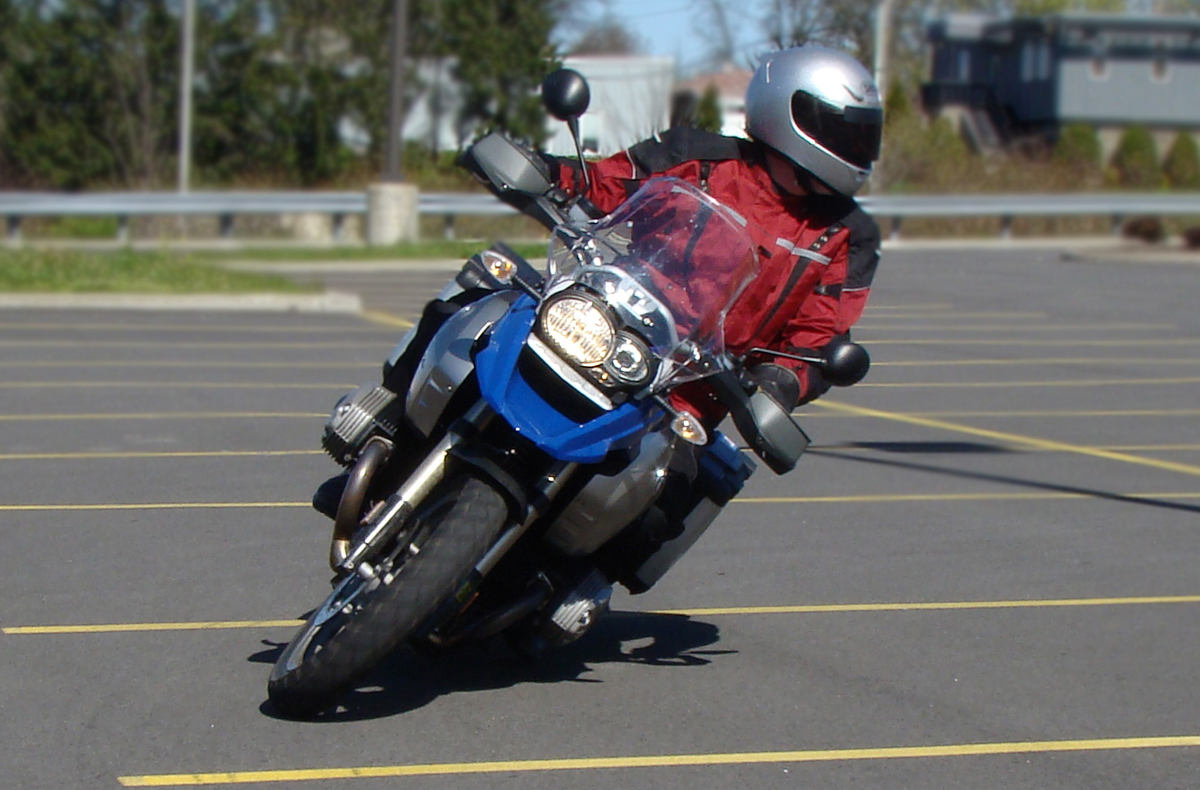 Admittedly, I appreciate people who think differently. It is unconventional thinking that has led to some of the most significant inventions and greatest advancements in human history. Unfortunately, not all alternative ideas are good ones. In fact, most aren't. The time I tried to use my walk-behind lawnmower as a snow thrower during one particularly bad winter comes to mind. It is true that necessity (or was it desperation?) often is the mother of invention. Just for the record, despite my own freethinking and stubborn determination, a lawnmower makes a horrible snow thrower. Even after you remember to remove the bagger. The point is, experimentation—especially when conducted outside of a testing facility and beyond the collaboration of industry experts—can have a dark side of its own.
Admittedly, I appreciate people who think differently. It is unconventional thinking that has led to some of the most significant inventions and greatest advancements in human history. Unfortunately, not all alternative ideas are good ones. In fact, most aren't. The time I tried to use my walk-behind lawnmower as a snow thrower during one particularly bad winter comes to mind. It is true that necessity (or was it desperation?) often is the mother of invention. Just for the record, despite my own freethinking and stubborn determination, a lawnmower makes a horrible snow thrower. Even after you remember to remove the bagger. The point is, experimentation—especially when conducted outside of a testing facility and beyond the collaboration of industry experts—can have a dark side of its own.
Shedding light on the Dark Side argument: The industry's view on the role of the motorcycle tire
In search of a balanced argument, I reached out to motorcycle manufacturers, tire manufacturers, heralded motorcycle safety experts and industry leaders to get their take on the subject. Not all are quoted here, but their input for this story was consistent.
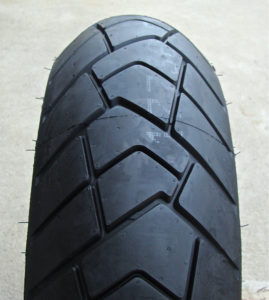
Before we delve into any comparisons to car tires, let's first look at motorcycle-specific tires themselves and the role they play. One of the first things that the motorcycle manufacturer points to is the tire as a vital consideration in the overall design of a motorcycle. Tire choice is never an afterthought for the manufacturer. Quite frankly, it can't be. Nathan Boyd, P.E., Director, Product Integrity at Harley-Davidson explains, "We look at the motorcycle as a complete system where the tires, the wheels, the swingarm, the forks and the frame are designed to perform together. Changing even one of those components can alter the bike's intended characteristics." So naturally, tire specifications are developed for each machine and then tested extensively to assure the optimum performance the product development team was looking for is achieved. Any deviation from that formula would potentially influence handling and safety. With so much thought, analysis and evaluation put into making sure that tires work as part of the bike's overall system, it's easier to understand why the factories urge riders to stick with what has been proven to work by highly skilled engineers, researchers and testers. Boyd punctuates that point. "As a motorcycle manufacturer, we feel strongly that use of tires outside our specifications is inappropriate, including using automobile tires on motorcycles." Like all manufacturers, Honda has developed clear tire guidelines and specifies approved tires for its motorcycles, including the Gold Wing, and recommends that owners refer to their owner's manual when making tire choices.
Even among motorcycle-specific tires, there can be tradeoffs when fitting non-specified tires to certain bikes. Imagine the potential compromises associated with installing a tire that was never intended to function on a motorcycle in the first place.
Advertisement
A one-track mind: The differences between car and motorcycle tires
According to Mike Manning, Dunlop Motorcycle Product & Marketing Manager, "There are several considerations when looking at tire design and use for a single-track 'camber' vehicle such as a motorcycle vs. a 2-track vehicle like a car or truck. Tire profile, construction and compounds are developed specifically for each type of vehicle." Why? Because cars and motorcycles handle differently. A lot differently. Take a look at the images of the sports car and the bike negotiating the same sharp left-hand bend. Although both are BMWs, their handling—and the demands on their tires—are remarkably unalike. The bike leans into the bend, rolling onto the inside edge of its tires. The car remains relatively flat or leans out of the curve, placing the vehicle's weight on the outer edge of the outside tires. Is there any wonder why the tires for each are designed differently to handle the unique forces placed upon them?

As the Motorcycle Industry Council puts it in its Tire Guide (developed in cooperation with the Motorcycle Safety Foundation and the major tire and motorcycle manufacturers), "Because a motorcycle is a single-track vehicle and leans as it turns, motorcycle tires are quite different than car tires. Whereas car tires have a fairly flat profile and a contact patch that varies little in size or shape, motorcycle tires have a U-shaped profile and a contact patch that changes size and shape during cornering." The shape of a motorcycle tire is designed to maintain a consistent contact patch throughout lean. A car tire in this application would be flat and fat when upright and thin and narrow when leaned. "Car tires and motorcycle tires are constructed and designed differently due to the different ways in which they are used," warns John Mosby of Kumho tires, one of the auto tire brands often selected by Dark Siders. "Kumho passenger car tires are not made to absorb the reduced contact patch at high camber angles that motorcycle tires frequently experience. Because of this, durability can be affected by operating at such high camber angles, which can lead to tire failure. We strongly discourage anyone from using Kumho passenger car tires on their motorcycle."
The profile of a motorcycle tire clearly has one large-diameter ring in the middle that tapers to smaller rings at each side (creating the U-shape). As the bike leans, this makes rounding curves much easier than if the tires were square like those of a car. Here's a quick demonstration. Grab an empty soup can from the recycling bin and a tapered coffee cup (that empty caramel macchiato cup will do nicely). Lay each on its side and roll them across the table. The can, shaped like a car tire, will track straight. But the tapered coffee cup, because it has larger and smaller diameters much like one side of a motorcycle tire, will want to turn. As you lean your bike from the large ring in the center toward the smaller ring on either edge, you are also in effect reducing the gearing of your bike, thereby slowing it in a curve. That makes it easier to add throttle through the bend as prescribed by most riding proficiency experts, which in turn stabilizes the bike's chassis for smooth cornering. The square car tire does not provide that advantage when leaned.
Beyond tire profile, sidewall stiffness plays an important role in motorcycle tires. The sidewall acts as a suspension component and must also provide enough rigidity to not only stand up to the unique forces placed upon it during cornering, but to also take advantage of those forces for precise handling. According to Dunlop, "When the bike is vertical, the bike's suspension system does much of the work in keeping the tire in contact with the ground and controlling the ride. When the bike is leaned, there is less mechanical suspension and more tire suspension characteristics at play. The bike tires are designed and constructed specifically for this use."
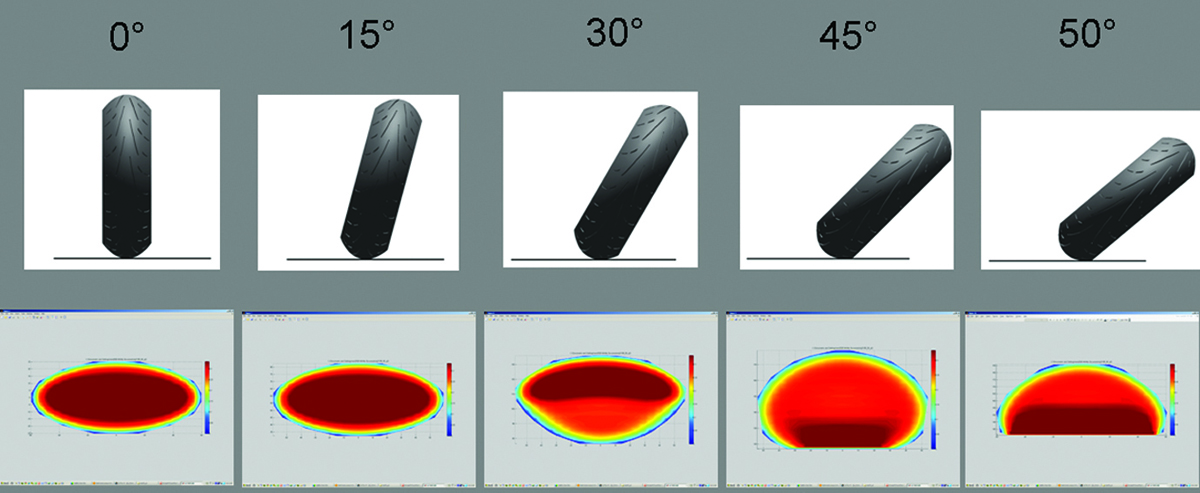
Most modern motorcycle tires use multiple rubber compounds; harder compounds in the center to maximize tread life for highway riding and softer compounds toward the edges to maximize grip when the bike is leaned. Car tires have just one compound since they are not designed to be leaned over or to contend with camber forces.
While use of a car tire might have no severe consequences during normal riding, it could be problematic when performance really counts, such as when a threat unexpectedly appears directly in the path of the rider. The bike fitted with a car tire cannot be relied upon to respond as well as one with a motorcycle-specific tire when maximum traction and precise handling are needed. Is it ever acceptable to give up even a small degree of performance advantage when that small compromise could be enough to make an avoidable crash an unavoidable one? Stayin' Safe founder Larry Grodsky once had a rider ask him if he really needed to wear protective gear. "No," Larry replied. "Just wear it on the day you crash." I suppose the same could be said for tires. Just use the motorcycle tires on the days when you need to avoid a crash.
The bottom line? The manufacturers, engineers and safety experts I spoke with all said the same thing; riders need to realize that this is not a good idea. The Motorcycle Industry Council puts it more directly, "Never mount a passenger car tire on a motorcycle rim; the flat profile of a car tire is incompatible with the dynamics of a vehicle that leans as it corners, and the section of the tire in contact with the rim (the 'bead') is incompatible with motorcycle rims." A motorcycle calls for a tire that was developed to be a specialist in single-track vehicle dynamics. Dare I suggest that it's not unlike the way brain surgery calls for a specialist in neurology. Would you turn to a gastroenterologist for that procedure because he or she has a lower hourly rate than a neurosurgeon? Both may be experts, outstanding in their respective fields, but neither would be a wise choice to fill the other's role. As motorcyclists, we have need for a specialist: the one that was developed specifically for the demands of motorcycling.
The darker side of the Dark Side argument
Still not convinced? Even if you believe that running a car tire on your motorcycle fits within your acceptable risk threshold on the road, you may have left out an important consideration that can strike a little closer to home. Can the rider with a car tire mounted on his motorcycle have complete confidence that, in the event of a crash, he will be covered by his insurance? Or that others injured in a crash won't target him with a costly lawsuit because he fit his motorcycle with tires that were not designed or intended for motorcycle use and may have contributed to the crash? Are the few dollars saved by turning to a car tire outweighed by the potential loss of a house and whatever dollars may be squirreled away for retirement?
As motorcycle safety expert and AMA hall-of-famer David Hough said during our recent conversation on this topic, "Motorcycle engineers get up awfully early in the morning to calculate what works best for bikes. An owner who disregards the engineers' advice should think carefully about his or her talents in being more clever than the engineers. The owner who installs tires not designed for the task must take full responsibility for the results." While the practice of fitting a car tire to a motorcycle may work suitably for some—even over many miles—there is no escaping that the rider must accept full liability for a practice that is not endorsed by the industry. Riders must consider carefully what accountability they may have as they openly encourage other riders to adopt a practice that is ardently discouraged by virtually all experts in the industry, including those who have no financial gains in selling more motorcycle tires.
Being a safety-oriented rider and writer, I'm inclined to make decisions that will limit my exposure to potential danger and to personal liability. While I am a huge proponent of creative and unconventional thinking, I am opposed to casual experimentation when life is on the line. Although I am tempted to trust the word of the many riders who have been able to clock thousands of miles on car tires, I place more trust in the collection of specialists working together on a daily basis to make sure that all components of a motorcycle work in harmony—not just to create a better rider experience, but also to avoid lawsuits due to product failures. So, upon careful investigation and consideration, my answer to the gentleman who inquired about taking our Stayin' Safe on-road course with a car tire mounted to his bike would still be the same. Only now, I feel that I have done the due diligence to understand why.
(This article was published in the July 2012 issue of Rider magazine. Below are links to sidebars that accompanied the article as well as letters to the editor following its publication.)
Related:
Avoiding Tire Failure: Getting the Most From the Tires That Were Meant For Your Bike
Erasing Doubt: Car Tires on Motorcycles
Letters to the Editor: Dark Side
Motorcycle Trike Back End of It Built Like a Dragon
Source: https://ridermagazine.com/2016/05/20/tales-from-the-dark-side-putting-car-tires-on-motorcycles/
0 Response to "Motorcycle Trike Back End of It Built Like a Dragon"
Post a Comment